AWS Certified Developer - Associate
Introduction
Certification Details
In this article, we explore the AWS Developer Associate certification, its benefits, exam structure, and sample questions. Learn how this certification can enhance your career by validating your skills in AWS cloud development and operations.
The AWS Developer Associate certification is part of a broader AWS certification program, structured into four distinct levels:
- Foundational – the entry-level certifications.
- Associate – where the AWS Developer Associate exam fits.
- Professional – advanced certification for experienced professionals.
- Specialty – certifications focusing on niche areas like networking, machine learning, or security.
Experience Recommendations
Although AWS suggests having some cloud or on-premises IT experience for Associate-level exams, beginners can still pursue this certification and build their skills.
Why Pursue the AWS Developer Associate Certification?
This certification demonstrates that you have:
- A deep understanding of core AWS services and architecture best practices.
- The ability to develop, deploy, and debug cloud-based applications using AWS.
- Enhanced credibility and confidence, helping organizations secure a competitive advantage while ensuring stakeholder satisfaction.
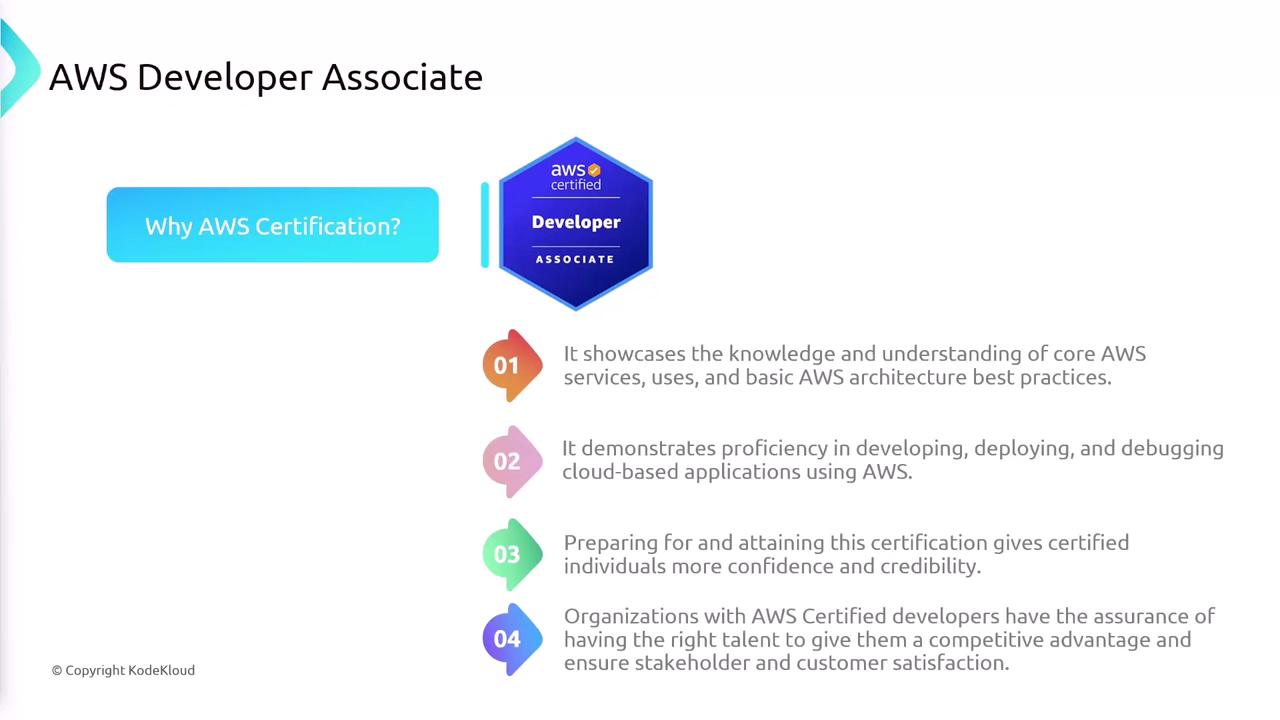
Who Should Consider Taking This Exam?
This exam is tailored for professionals who:
- Possess hands-on experience in a development role and are proficient in at least one high-level programming language.
- Have practical exposure to AWS technologies.
- Understand traditional IT environments and their cloud equivalents.
- May also have experience with other cloud platforms.
Guidelines for Candidates
While these prerequisites are recommended, not meeting them does not disqualify you. AWS designed the exam to help you expand your knowledge, regardless of your initial experience.
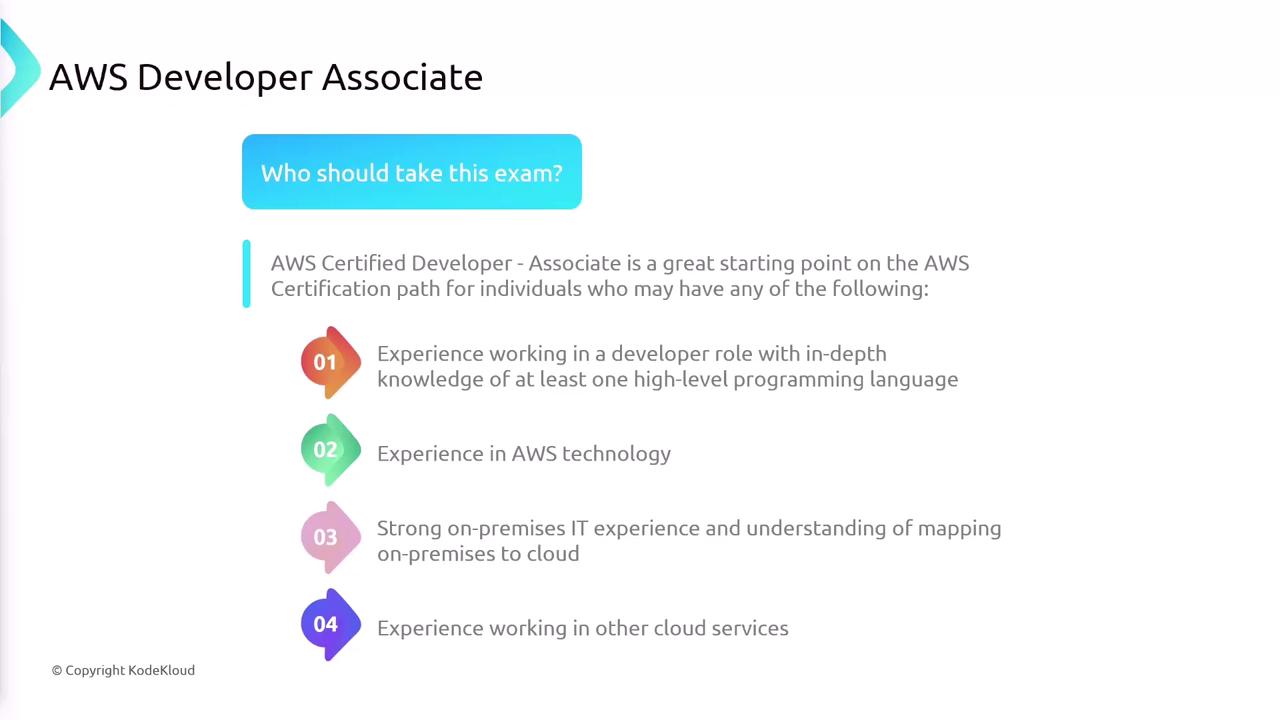
Exam Content and Structure
The AWS Certified Developer - Associate course covers key topics validated by the exam, including:
- Developing and optimizing applications on AWS.
- Utilizing continuous integration and continuous delivery (CI/CD) for application packaging and deployment.
- Securing application code and data.
- Troubleshooting and resolving application issues.
The exam consists of two question formats:
- Multiple-choice questions with four to six answer options.
- Multiple-response questions that require selecting two or more correct answers.
Key details include:
- Total Questions: 65 (50 scored and 15 unscored questions)
- No penalty for incorrect answers, so it is best to attempt every question.
- Grading Scale: 100 to 1000 with a minimum passing score of 720.
- Duration: 130 minutes to complete the exam.
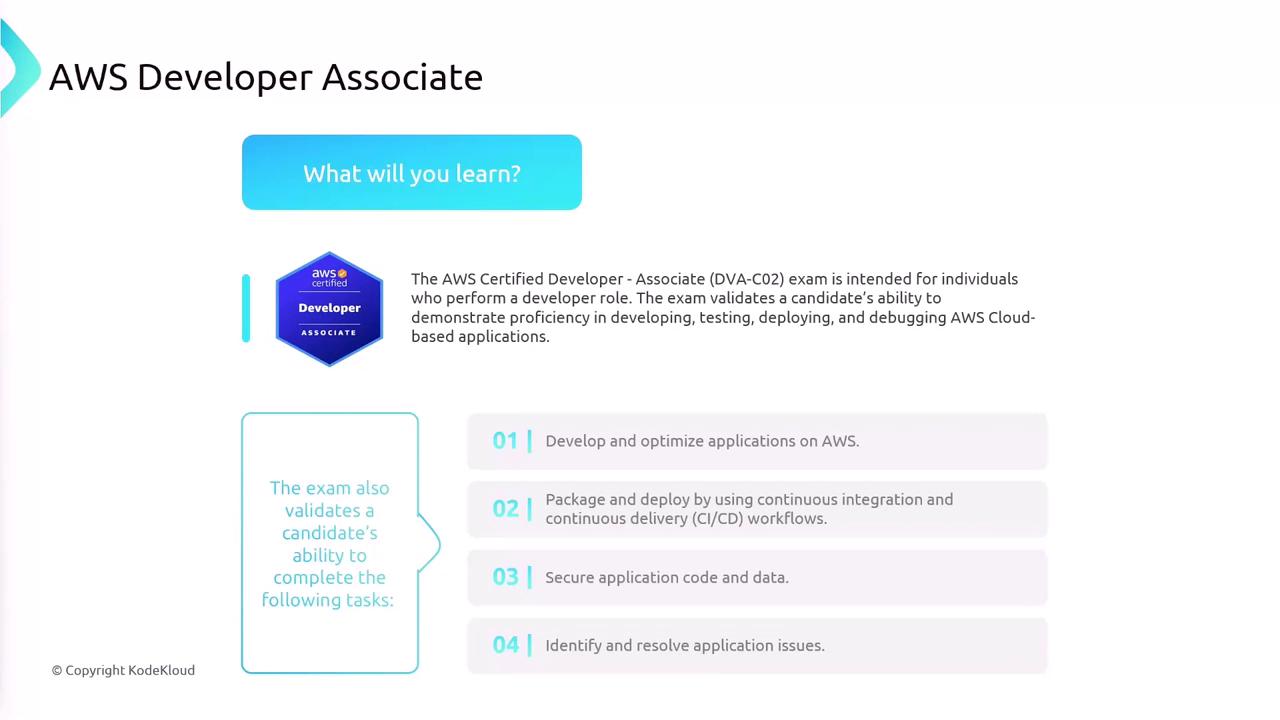
Breakdown by Domain
The exam is segmented into four key domains:
| Domain | Percentage |
|---|---|
| Development with AWS services | 32% |
| Security | 26% |
| Deployment of applications | 24% |
| Troubleshooting and optimizing applications | 18% |
This breakdown ensures a comprehensive evaluation of the skills needed for AWS development.
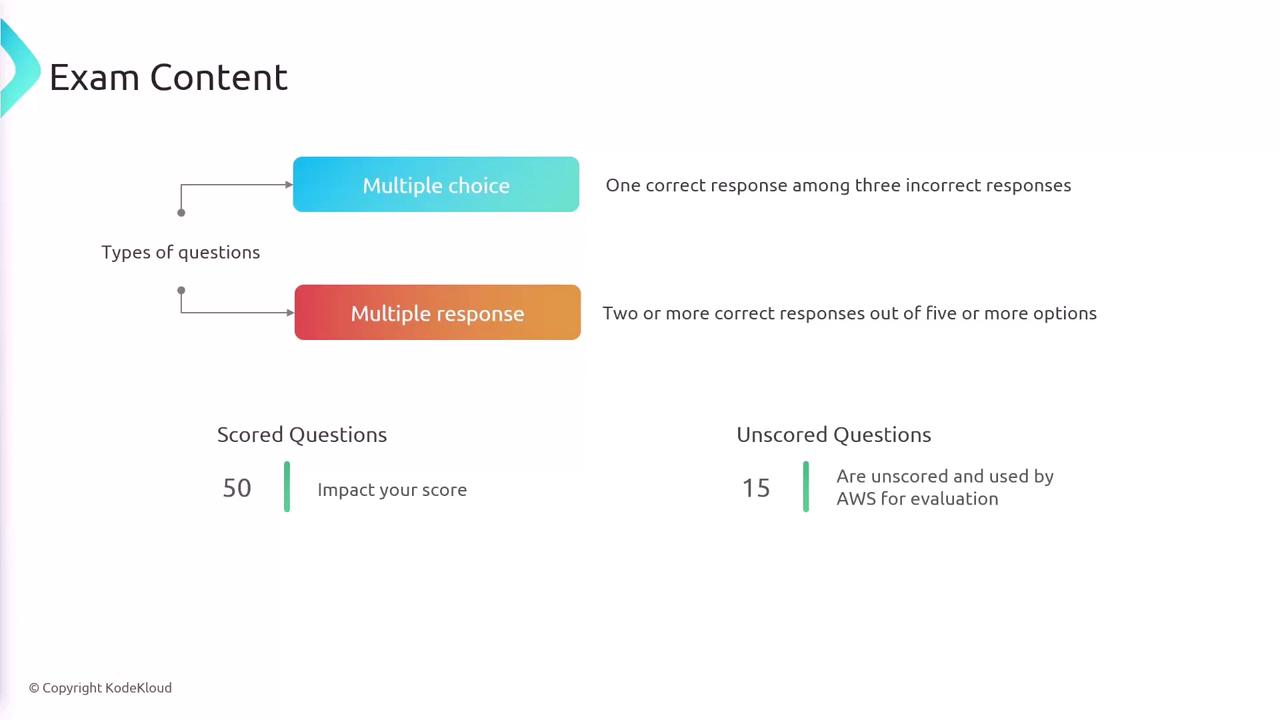
Sample Exam Questions
Below are two sample questions to help you get acquainted with the exam format.
Multiple-Choice Question
A company is migrating a legacy application to Amazon EC2 instances. The application currently uses a username and password stored in the source code to connect to a MySQL database. The company plans to migrate the database to an Amazon RDS instance for MySQL and requires a secure method to store and automatically rotate the database credentials. Which solution meets these requirements?
A. Store the database credentials in environment variables within an Amazon Machine Image (AMI) and rotate them by updating the AMI.
B. Store the database credentials in AWS Systems Manager Parameter Store and configure it for automatic rotation.
C. Store the database credentials in environment variables on the EC2 instances and rotate them by relaunching the instances.
D. Store the database credentials in AWS Secrets Manager and configure it to automatically rotate the credentials.
The correct answer is D.

Multiple-Response Question
Developers are creating a web application that enables users to post comments and receive feedback in real time or near real time. In this multi-response question, you must select the two options that best fulfill these requirements from the five provided.
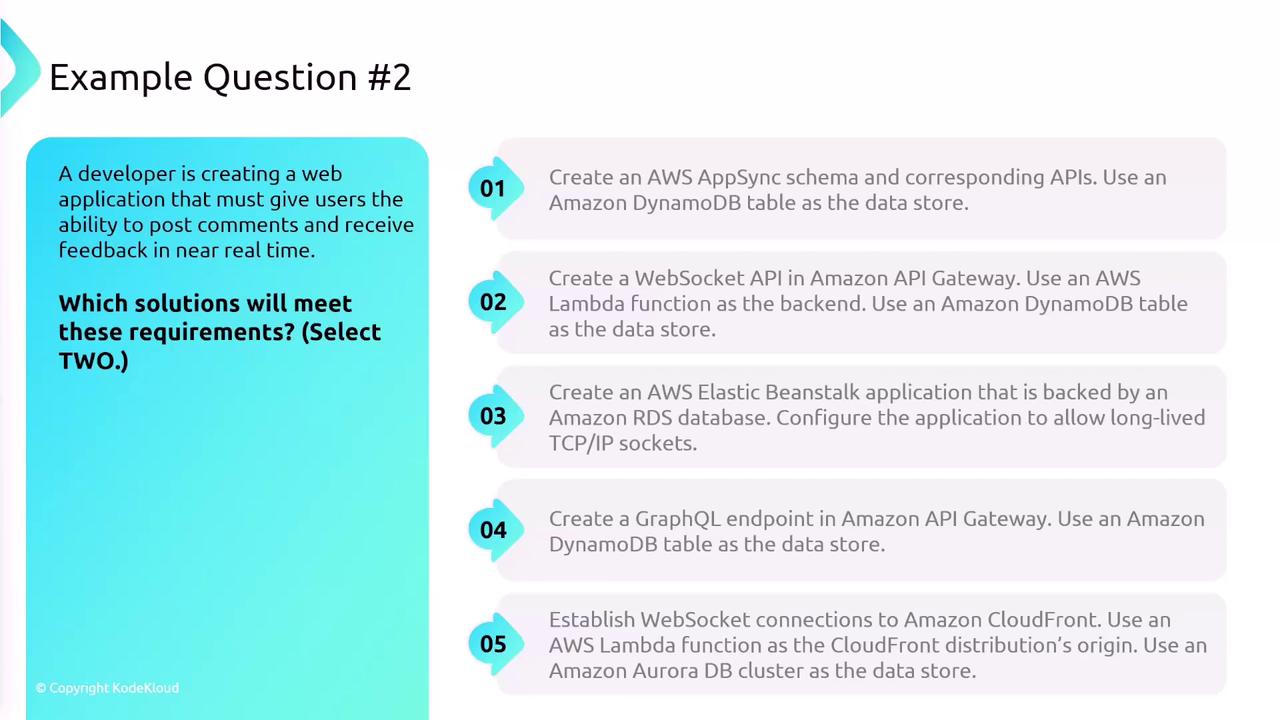
These sample questions are indicative of the exam's format and topics. Additionally, the course includes two mock exams to help you practice and ensure you are fully prepared on exam day.
Watch Video
Watch video content